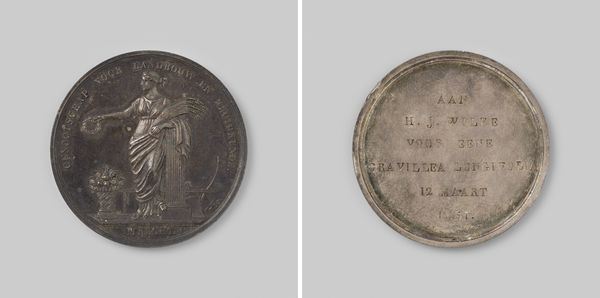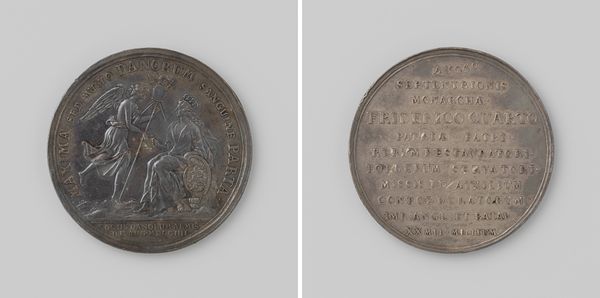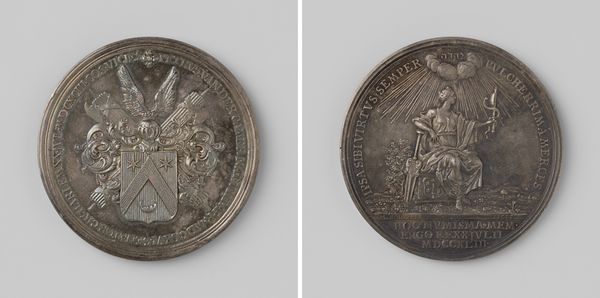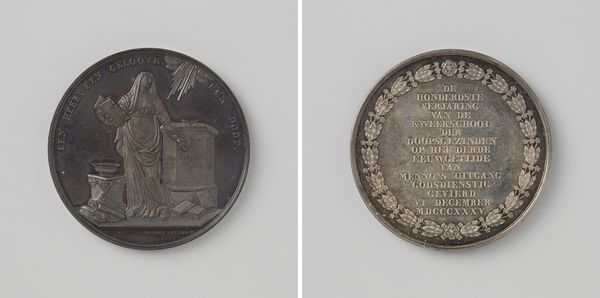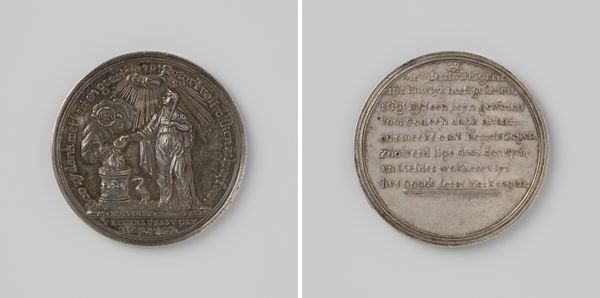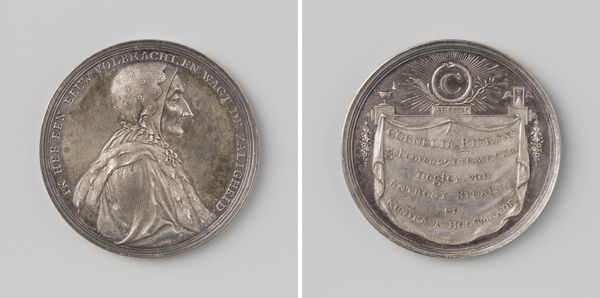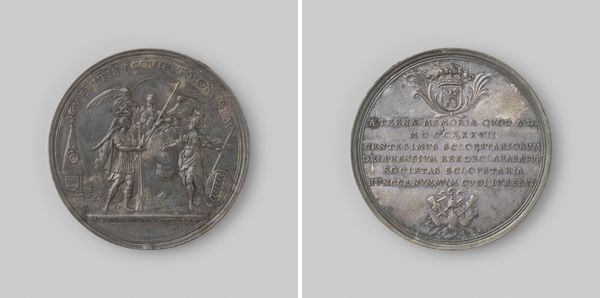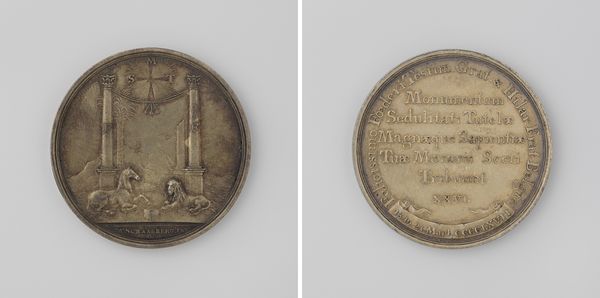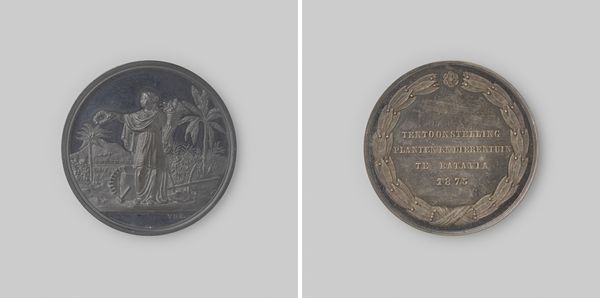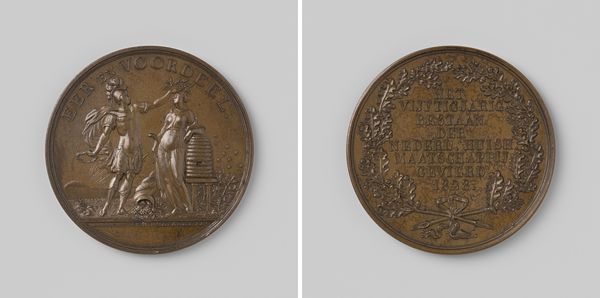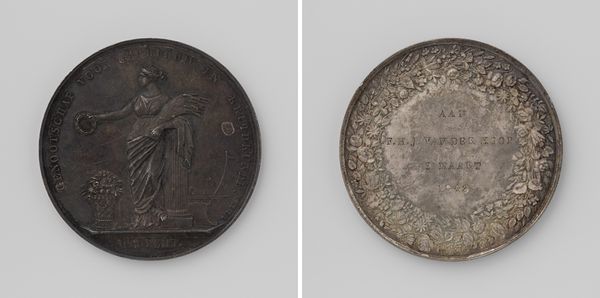
silver, print, engraving
#
medal
#
neoclacissism
#
silver
# print
#
history-painting
#
engraving
Dimensions: diameter 6.5 cm, weight 87.75 gr
Copyright: Rijks Museum: Open Domain
Curator: Here we have a fascinating example of 19th-century craftsmanship. This is a silver medal commemorating the Concordat between Franz Joseph I, Emperor of Austria, and Pius IX, made in 1855. It's quite detailed. What's your first impression? Editor: Immediately, I’m struck by the cool detachment, a sense of calculated balance between the figures that speaks volumes about power dynamics. The material coldness underscores a formal arrangement rather than a heartfelt agreement. Curator: Absolutely. It is, after all, an engraving on silver. The medium dictates a certain precision and rigidity, don't you think? It's not the kind of thing where spontaneity can be easily achieved. The engraver is attempting to legitimize state power using symbolic tools. Notice the two figures? On the left, Austria, carrying the swords of power and on the right, the Pope holding the cross, the religious arm, the literal instrument of crucifixion but also faith. Editor: And situated firmly in the visual language of its time, Neoclassicism! It overtly conveys the idea of these powers seated in mutual legitimacy. How might their separate symbolism ultimately be reinforcing not their unity but their inherent separation? What sociopolitical structures facilitated this alliance? Were there voices deliberately excluded from the creation and celebration of this 'sacred concord?' Curator: Certainly the material production would involve artisans trained within specific guild systems, likely men, further solidifying a gendered division of labor and cultural production, embedding hierarchical relationships into the work itself. The fact that the medal would be presented in social circles makes it both propaganda and an important material signifier in the negotiation of power. Editor: And how do you think such imagery was absorbed or rejected by people outside of courtly circles? Thinkers like Marx were busy writing critically about religion as the “opium of the people," after all, precisely at this time. The agreement, as an exercise in power, could hardly be divorced from broader socio-political unrest! Curator: It speaks of this moment in Austrian history. The work embodies complex narratives regarding church-state relations, class structures, and artistic creation. The intersection of materiality and historical context is what truly brings the object to life. Editor: Indeed, this commemorative medal, through its medium, technique, and imagery, not only embodies a specific historical moment but also compels us to question the power structures and social discourses that shape our understanding of such accords.
Comments
No comments
Be the first to comment and join the conversation on the ultimate creative platform.
